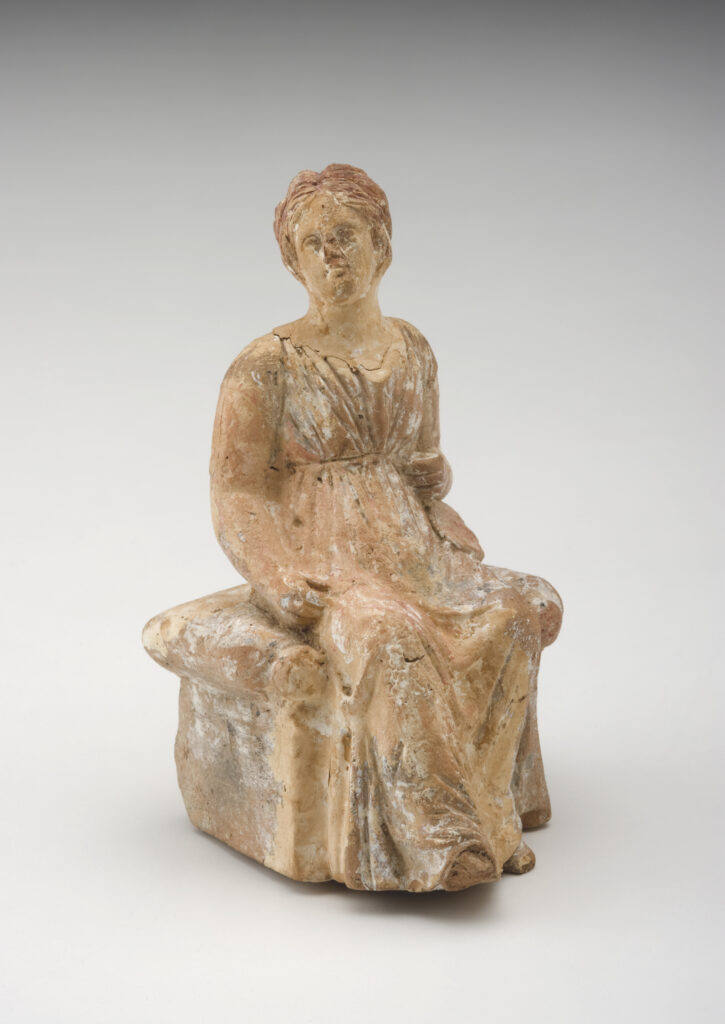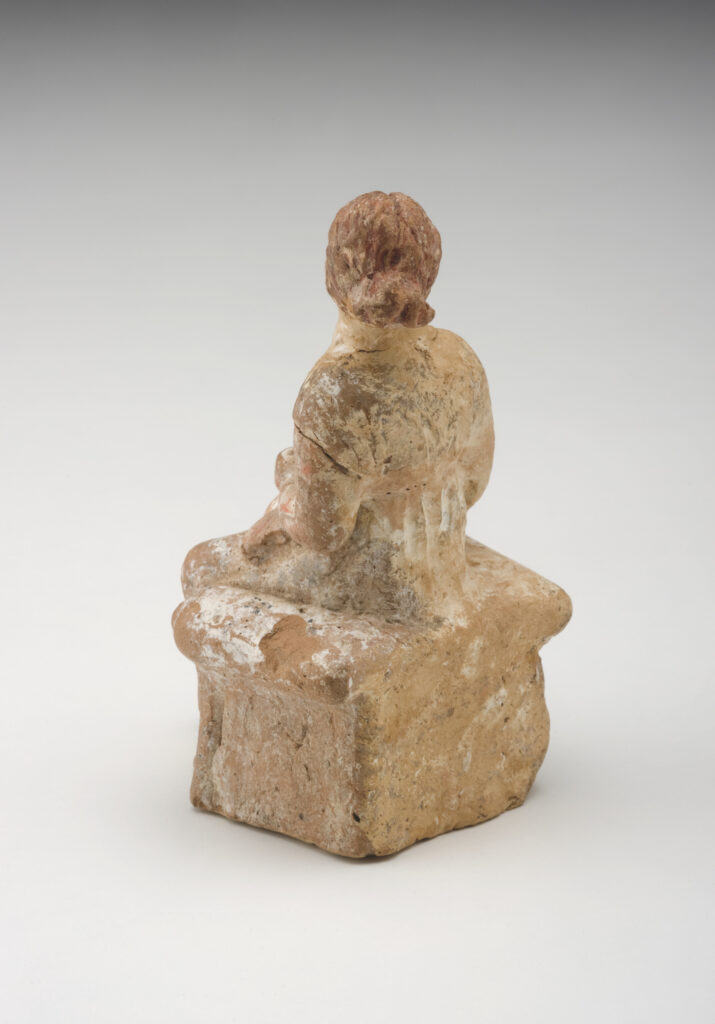Woman Seated on a Bench (work of art)
Artwork Info
About
Key Ideas
- This is a small statuette, or figurine, of a woman sitting on a bench. She is wearing a chiton, or long sleeveless gown, which was a popular style of dress in ancient Greece.
- A Tanagra figurine is a type of terracotta sculpture that was made by pressing clay into two-part molds. The heads and arms were often made in separate molds and attached to the statuette before firing.
- Tanagra figurines served as household objects as well as dedications to the deities (gods and goddesses). These figurines were also buried with the deceased, to serve as their companions in the afterlife.
- Tanagra figurines are named after the town of Tanagra in Greece, where many of these figures were excavated.
Learn More
Most Tanagra figurines represent human figures. Some have features that show their status as a divine being. Tanagra figurines served a variety of functions. Some were valued as household possessions. Others served as dedications to gods and goddesses or as companions to the deceased in the afterlife. These figurines are named after Tanagra, Greece, where many of them were found. Tanagra figurines were produced and exported throughout the Mediterranean region.
Well-dressed young women are the main subject of most Tanagra figurines. They are often depicted wearing a chiton (a full-length Greek garment) and a himation. The subject of Woman Seated on Bench is wearing only a chiton. Tanagra figurines were originally covered with a white coating and then painted. The garments were painted bright colors like blue, red, pink, yellow, brown, and violet. The skin was painted pink or reddish. The lips were painted red, and the eyes were painted blue. This figurine has traces of the original white coating and red paint.
Tanagra figurines were made in two-part concave terracotta molds. One side was used for the front and the other side was used for the back. The head and arms were made in separate molds. These parts were attached to the body with slip, or liquified clay, before firing. The use of separate molds made it possible to create figures with slight differences in the positioning of the head and arms. Sometimes handmade accessories like hats and fans were added to the figurines.
Additional Resources
Resources for Teachers:
- View a terracotta sculpture of two girls at the Metropolitan Museum of Art.
- View another terracotta figurine of a woman at the Metropolitan Museum of Art.
Resources for Students:
- View a similar figurine at the Metropolitan Museum of Art.
- Watch a video about Tanagra figurines.


